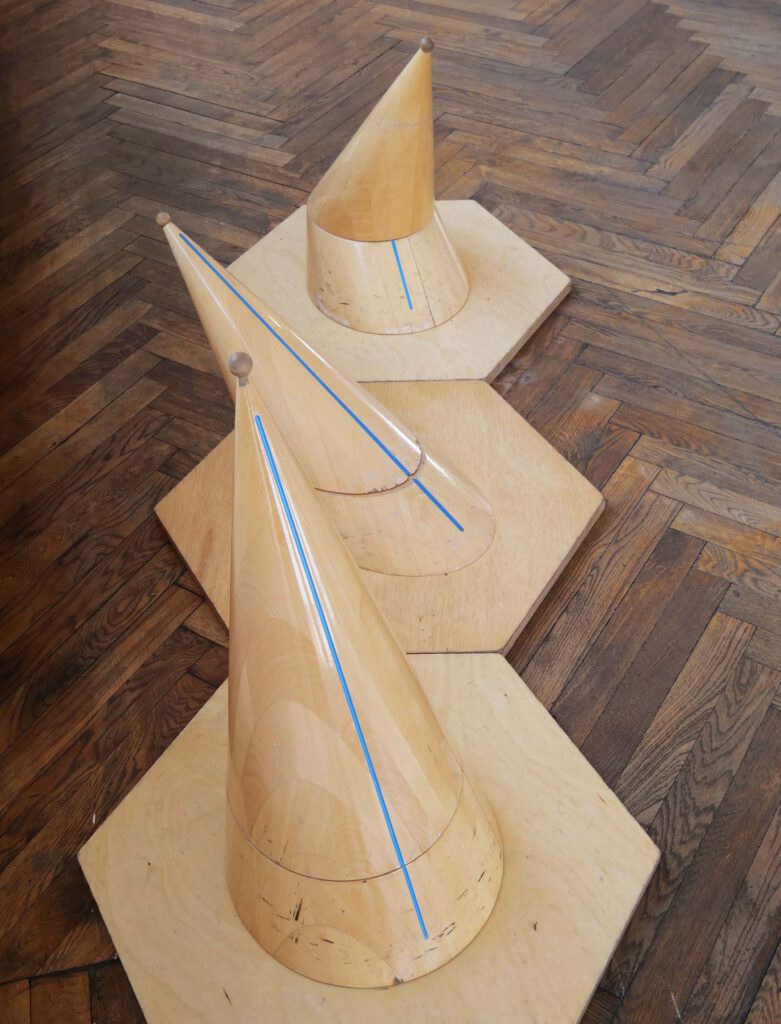Elliptic mountains and conic sections
Why is an ellipse actually a conic section? And what symmetries does a conic section have? The exhibits “Ellipse Mountains” and “Cone Sections” deal with these two questions. A conic section is defined as the intersection curve of a plane with a double cone. From your school lessons you know that parabolas, ellipses and hyperbolas can appear as such conic sections. But why is this true? And why do all these curves (except the parabola) have two mirror lines? These are the questions we want to explore in this advanced text.


